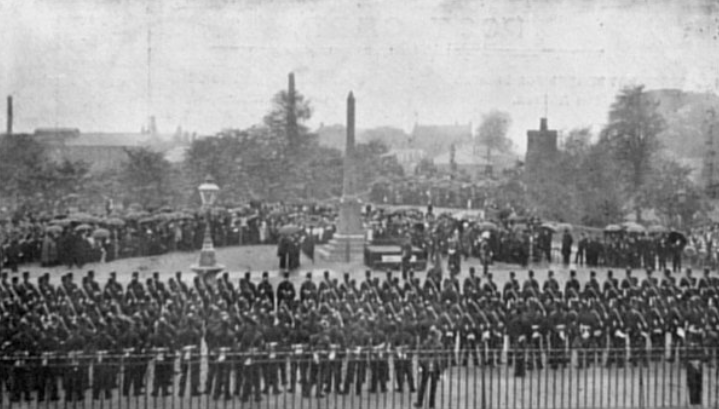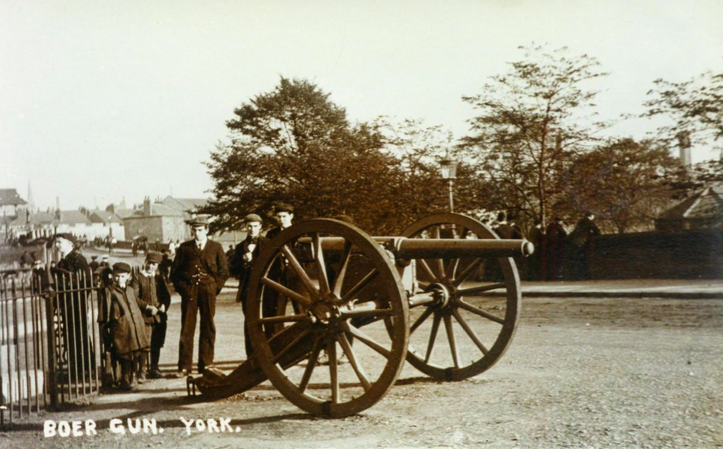
By David J Nicholson, Green Howards
On the 25th May 1904 in the presence of the Lord Mayor of York, the Sheriff and the Corporation, Major General Sir Leslie Rundle unveiled the obelisk, which was erected in the memory of members of the Princess of Wales’s Own Yorkshire Regiment (Green Howards) who lost their lives in the South African war, 1899 – 1902. Following the ceremony the care of the monument was handed over to the Lord Mayor for its safe keeping in perpetuity.
The memorial stands on what was then open space close to Skeldergate Bridge on land provided by the Corporation of the City of York. The memorial takes the form of a polished red granite obelisk with, on one side, an inscription with the Regimental badge and at the base on four sides the names of all those killed in action or who died from disease.
When first erected those responsible could not have imagined that the peaceful area chosen for the memorial would be, today, surrounded on all sides by heavy traffic, thereby denying the public safe access to the memorial. To put this into context, the first of 15 million Model T Fords was not produced until 1908.
Why was York selected for the memorial, given that the city is not the territorial headquarters of the Green Howards? The answer is that York is the is capital of Yorkshire; military life was strong and vigorous in the city and the monument emphasized this fact; it also lacked outdoor symbols of soldierly achievement, which one would expect in the headquarters of an important military district.
The 1st Battalion landed in Cape Town on 15 December 1899. From there they were soon in action. Over the next ten months they advanced to Paardeburg, Kimberley, Bloemfontein, Johannesburg, Pretoria and east to Komati on the Mozambique border, a distance of 1000 miles, which they covered on foot. They slept under cover for only four nights during that time enduring freezing bivouacs, tropical-like downpours and intense heat. Water was invariably in short supply.
It was on the Modder River at Paardeberg that Sergeant Alfred Atkinson was awarded the Victoria Cross getting water for and rescuing wounded soldiers while under fire fifty yards from the enemy’s position. Up to 1900 the there was no posthumous award as the recipient had to receive the Victoria Cross from the monarch herself. The rules were changed following a two-year campaign championed by his mother, Margaret Atkinson from Armley, Leeds.

During the three-year campaign, 22,000 men from the United Kingdom and the Empire lost their lives, sixty six percent of whom died from enteric fever or dysentery. This was largely due to poor hygiene and sanitation, physical exhaustion and inadequate rations. Two large biscuits and half a pound of trek ox was a typical daily ration.
While the brunt of the Regiment’s fighting was conducted by the 1st Battalion Green Howards, some of whom were mounted infantry, our Volunteer and Militia battalions also played their part. A total of 248 Green Howards lost their lives, 186 from sickness, 62 killed in action and 163 were wounded.
One hundred and fifteen years on, the My Castle Gateway scheme provides the opportunity to relocate the memorial to a more tranquil and accessible place befitting those who paid the ultimate sacrifice.